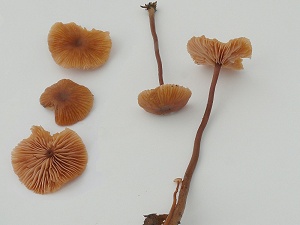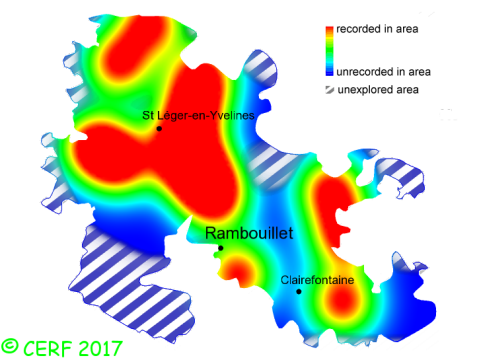| Laccaria affinis (Singer) Bon |
|
|
|
|
|
|
The cap is copper-brown to pink brown, drying to buff, convex then flattened to depressed, sometimes slightly umbonate; its margin is striate, often wavy in the old age. The cap surface is smooth to slightly flaky in the centre, not viscid nor sticky, but hygrophanous. The stem is red-brown, same colour as cap, full then hollow, tough, without ring. The flesh is whitish to pale pink, thin, unchanging; its taste is mild, slightly acidic; the odour is not distinctive; its texture is fibrous. The gills are flesh pink, adnate to slightly decurrent or adnate-emarginate, distant, thick . The spore print is white. This species is mycorrhizal or saprophytic. It grows on the ground, in peatlands, coniferous or deciduous forests, open lands, gardens, on a rather poor soil. The fruiting period takes place from June to November.
Distinctive features : copper brown cap with distinctively striate margin; white down at stem base; flesh pink gills; in peatlands, gardens, forests or forest edges Laccaria affinis is occasional and widely present in the forest of Rambouillet, and is occasional, more generally speaking . | ||
|
page updated on 14/01/18

